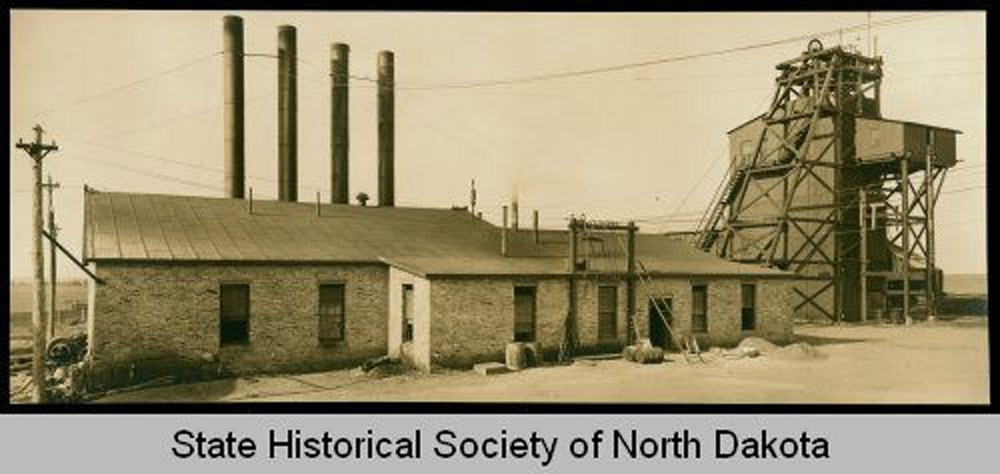History of coal in North Dakota:

Historic Mine: In 1920, the mine at Wilton, founded by General William Washburn, was the largest lignite mine in North Dakota. Photo courtesy of the State Historical Society of North Dakota.
- American Indians burned lignite as a substitute for firewood.
- Some of the early settlers used lignite from wagon minesWagon mines were very small mines that got this name because farmers and ranchers would bring their horse-drawn wagons to the mine to be filled with coal for heating their homes. as a fuel for heating their homes.
- North Dakota's first commercialA commercial (kah-MERSH-al) business is a business set up to sell products or provide services in order to earn money. lignite mine was started in 1873 in Morton County.
- Steamboats and railroads needed coal to power their steam engines.
- By 1900, more than 70 lignite mines were operating in the state.
- By the early 1920s, North Dakota had approximately 250 lignite mines.
- Together, these mines produced close to 1 million tons of coal.

Underground Mining: Some of the underground mine tunnels extended for thousands of feet. Picture of a motor train inside the Washburn Lignite Coal Company Mine. Photo courtesy of the State Historical Society of North Dakota.
- Many of the early mines in North Dakota were underground mines.
- Underground mines are dangerous in North Dakota because the state's geology does not have the hard rock layers needed to support the ground above the coal. There are no underground mines in North Dakota today.
- When steam shovels and other large earth-moving equipment became available, surface mining replaced underground mining in North Dakota.
- Surface mining means removing the top layers of soil and rock to get to the coal. Because lignite is so close to the surface, it is more economical and safer to surface mine than to mine underground.
- In North Dakota, topsoil and subsoil are removed first and stored separately.
- Layers of rock and dirt are then removed from the top of the coal layer with giant machines called draglines and put into an area where coal has already been removed.
- The coal is removed with loaders, or shovel-type machines, and taken to a facility to be processed.
- The topsoil and subsoil are replaced to make the land like it was before mining.
A Dragline Operator's Point of View: See the dragline work from the point of view from a dragline operator. Video courtesy of Basin Electric Power Cooperative.
- Today, approximately 30 million tons of lignite are mined each year in North Dakota.




